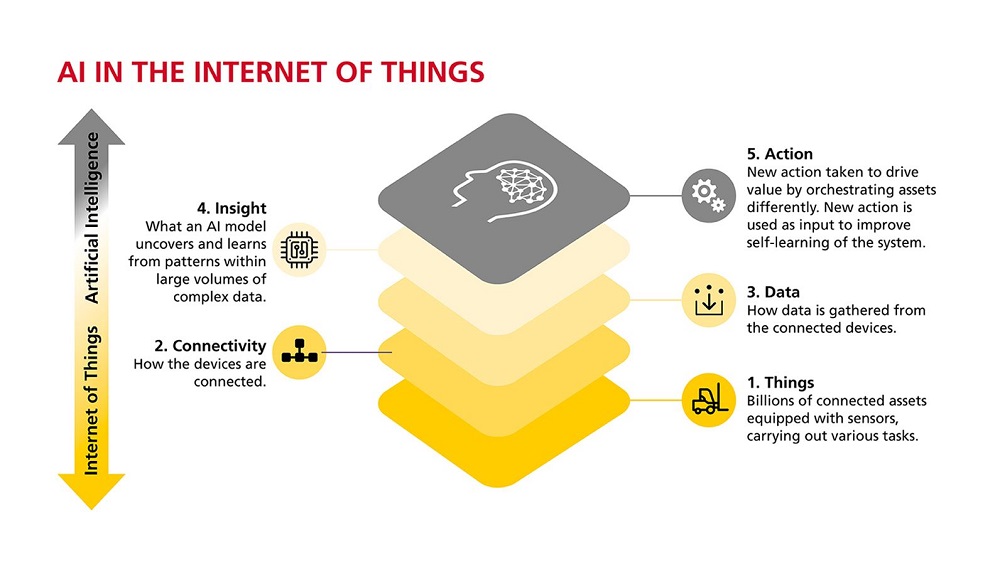The idea of having your fridge turn on the AC or the washing machine and then remind you to buy some groceries on the way home doesn’t seem so far fetched. This is thanks to the Internet of Things which promises to completely reshape our lives by translating our physical world into digital signals.
What is IoT and why does it need AI?
The Internet of Things or IoT can be defined as a network of physical objects that use embedded sensors, actuators and other devices that can collect or transmit information about the objects. According to a report from Gartner, by the end of 2020, the number of existing connected devices is expected to rise to over 25 billion. In other words, there will be more than three things connected to the internet for each person on the planet.
The use of smart devices goes beyond having your alarm clock or phone notifying the coffee machine to start brewing coffee for you. For instance, the IoT technology can be applied to transportation networks, the “smart cities” that hopefully will help reduce waste and increase energy saving. Connected devices can also be used in healthcare for patient monitoring. A smart device can gather data about a person’s heart rate, respiratory rate, skin temperature and body posture. All these details can alert doctors to potential health problems before they arise, or provide them with relevant information regarding which treatments could be most effective for their patients, even when their patients aren’t in the office.
If you’re wondering what role artificial intelligence plays in all this, remember that AI excels at identifying patterns and using them to make predictions. All the data that is being collected by smart devices can be analyzed with the help of machine learning models that can afterwards learn to adjust the behavior of IoT services.
Artificial Intelligence of Things
Artificial intelligence and Internet of Things are the perfect mix. Together they have created a new concept called the artificial intelligence of things or AIoT. The purpose of AIoT is to improve human-machine interactions and enhance data management and analytics. Adding artificial intelligence capabilities to Internet of Things will clearly facilitate a better analysis and decision-making progress.
Even though the Artificial Intelligence of Things is a relatively new concept, the combination of AI and IoT brings a whole new range of possibilities. At the same time, technology companies are really open to the idea of leveraging the benefits of AI to add value to IoT systems.
AI technology, more specifically machine learning, is able to automatically identify patterns and detect anomalies in the data that smart sensors and devices collect. Machine learning approaches can make operational predictions up to 20 times faster and with greater accuracy than traditional business intelligence tools. AI applications for IoT systems can also enable companies to avoid unplanned downtime, increase operating efficiency, spawn new products and services, and enhance risk management.
Continue with AIoT use cases on Strongbytes’ blog.

